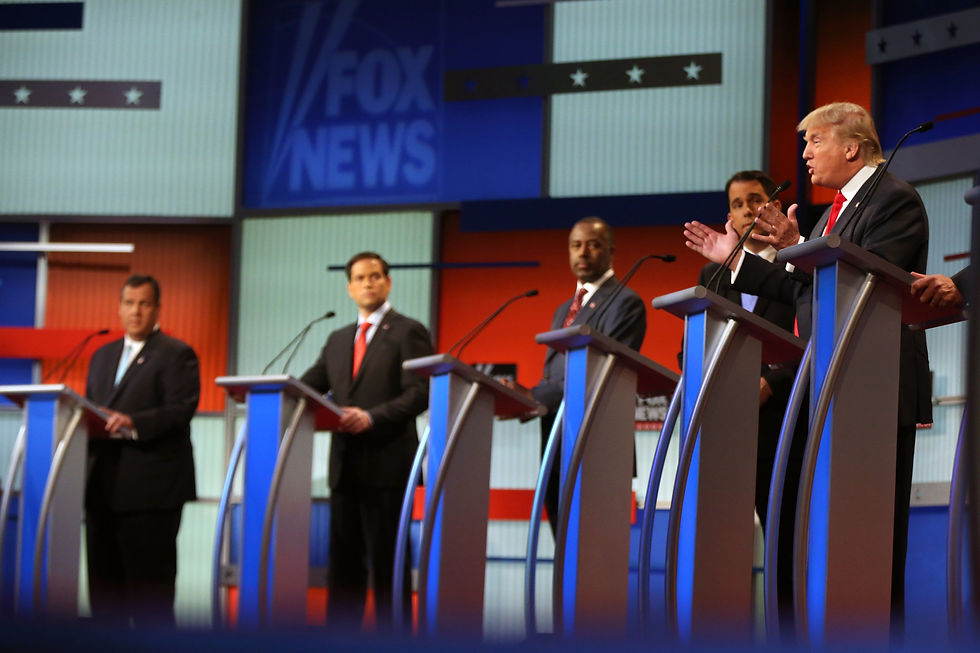Week I: The Primaries
- Erika Steiner
- Feb 10, 2017
- 3 min read
Although I was confused about how to divide up the massive amounts of research in front of me, it seemed natural that I start with the primaries. Beyond the sheer chronological advantages, primaries are my favorite part of the election. Unlike many, I look forward to the emotionally charged advertisements that plague my television and mailbox, and the non-stop news coverage and debates. This is partially because I'm a political junkie, but also because I think primaries are the most important part of any election.
Beyond just dictating candidate selection, primaries shape the general election. Often times their effects go unnoticed, but that doesn't mean they're small.
In primaries, campaigns and candidates develop their initial approach to the election. There is a common misconception that the primary election weeds out the approaches that are failing, and the general election is simply a continuation of those that are successful, but I find this to be largely untrue.
Often times, after the primary elections have been clinched and before the official nomination process occurs, campaign teams reflect on the primaries to decide how they're moving forward. Some candidates, such as Donald Trump, evaluate the success of their original plans and continue. Others, such as Hillary Clinton, use the events that have occurred to make major changes to their campaign goals.
And while not everyone may agree with my interpretation of how the two major candidates responded to the primaries, I drew this conclusion by looking at how these candidates responded to their opponents, and their campaigns before and after their nominations.


For Hillary Clinton, I focused on her change in approach. Intially, she was a middle of the road, experienced establishment candidate. Although Hillary won the primaries, the unexpected challenge Bernie Sanders presented affected her general election campaigning. His charisma and ideals attracted millennials, an audience Clinton wanted to turn-out in November. Clinton realized that Sanders won over millennials, and she needed to be more like him to attract support. After the primaries, Clinton was a different candidate. She began to focus on certain left-leaning issues she'd previously paid little attention to, and she worked to emphasize her experience while removing the deep-rooted connotation between herself and the establishment in order to gain support from millennials. Clinton went left to gain millennial support, but she may have alienated moderates in the process.

For Donald Trump, the primaries were a different experience. Unlike front runner Hillary Clinton, opposing candidates thought Trump had no chance. In turn, when Trump mentioned his policy plans, few candidates tried to hold him accountable. Debates were riddled with personal attacks, and focused little on addressing the policies Trump advocated for. Thus, if any flaws did exist in Trump's policies, voters rarely heard about them, or alternative options from his opponents. Also, Trump's controversial rhetoric didn't alienate voters as much as expected, and was even absorbed into other candidate's campaigns when they began to see how much media attention it was getting. Trump's unexpected success (to others, at least) allowed him to beg the question, "Do these people really know what they're talking about if they were wrong about my chances? Do I need to listen to them and change my controversial approach, or should I stick with what works?"
It's fair to say that, to the average American, the results of the primaries were unexpected. The New York Times uses this graphic to demonstrate that only 9% of America chose Trump and Clinton as nominees. But, as I stated before, the primaries were more important than the selection of candidates. The primaries didn't meet a lot of expectations. Hillary had an opponent that ended up overwhelmingly attracting voters she needed, and potentially forced a change in agenda that could have hurt her chances with moderates. Donald was an outsider with radical views who ended up winning over the party of tradition with controversial rhetoric, and it was arguably this rhetoric that got him elected by voters without college degrees (see future demographics post).
This post isn't evidence heavy, but I'm still sharing it because I think it's important that I establish something at the beginning of my project: everything matters. I named my project after the Butterfly Effect because I want to emphasize that the ABC interview with that Vermont Senator who seemed a little displeased with Hillary's assumed nomination, or that jab Marco Rubio made on television about hand size, can all affect the election in big ways. Even...no, ESPECIALLY in the beginning.
Below is the mind map for this week! Disclaimer: I do not have the best handwriting, there are some smudges because I may have done this on a Starbucks coffee table, and the clearly visible tape is intended to add character because otherwise the map might be too perfect.

Comments